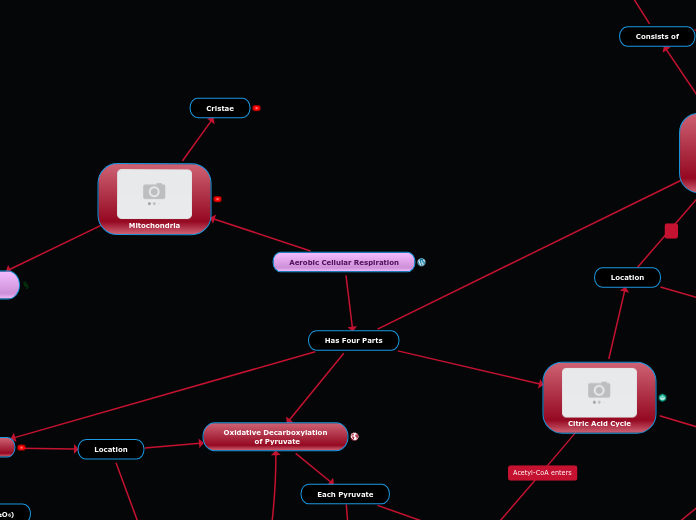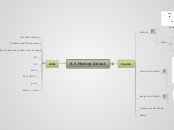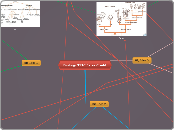Produces
1 CO2
1 NADH
Aerobic Cellular Respiration
Mitochondria
Anaerobic
Respiration
Alcohol Fermentation
Lactic Acid
Fermentation
Cristae
Has Four Parts
Oxidative
Phosphorylation
Consists of
Electron Transport
Chain (ETC)
Produces 6H20
as a final electron receiver
Creates a concentration
Gradient of H+
Used In
Chemiosmosis
Net 36-38 ATP Per
Glucose
Citric Acid Cycle
Mitochondrial
Matrix
What is the Mitochondrial Matrix and what does it do?
In the mitochondrion, the matrix is the space within the inner membrane. The word "matrix" stems from the fact that this space is viscous, compared to the relatively aqueous cytoplasm.
Function. The mitochondrial matrix is the site of the tricarboxylic acid (TCA) cycle, a series of enzymatic reactions initiated by the conversion of pyruvate and fatty acids to acetyl coenzyme A (acetyl-CoA). Pyruvate and fatty acids are transported into mitochondria from the cytoplasm by membrane-bound permeases.
Each Acetyl-CoA
Produces
1 FADH2
3 NADH
Electron Carriers
Used In
2 CO2
1 ATP
Oxidative Decarboxylation
of Pyruvate
Each Pyruvate
Becomes Acetyl-CoA
Glycolysis
Glucose (C₆H₁₂O₆)
2 ATP invested
to produce
2 NADH
Used in intermediate Process
2 Pyruvate
4 ATP
What is ATP?
Adenosine triphosphate is an organic compound and hydrotrope that provides energy to drive many processes in living cells, e.g. muscle contraction, nerve impulse propagation, condensate dissolution, and chemical synthesis.
Formula
: C10H16N5O13P3
Molar mass
: 507.18 g/mol
Location
Cell Cytosol









